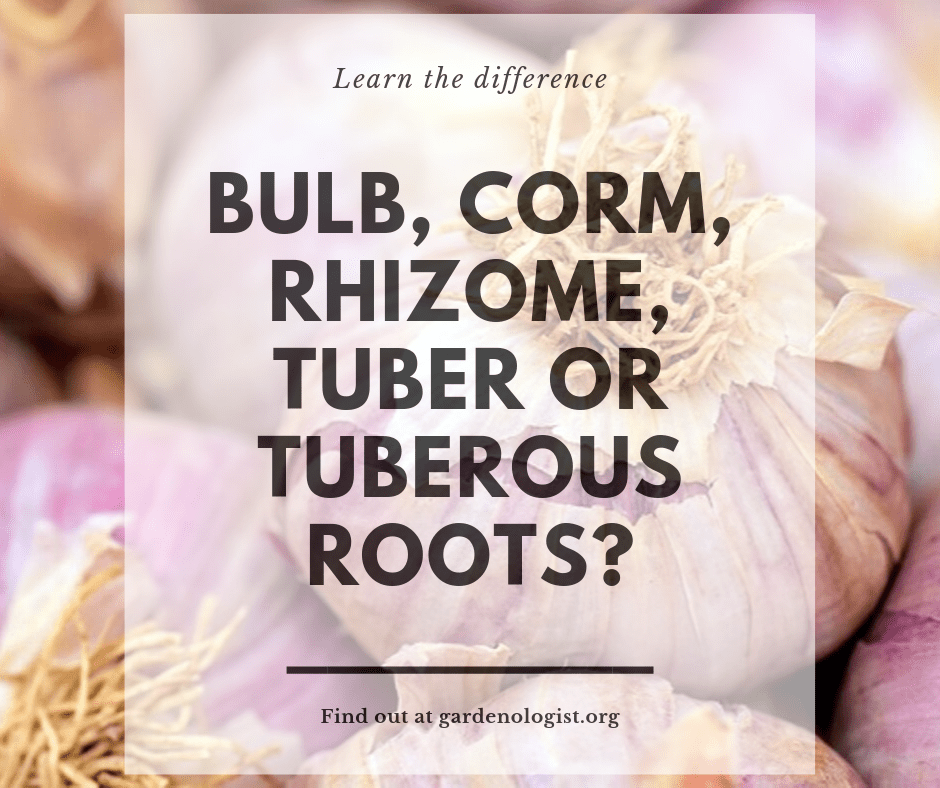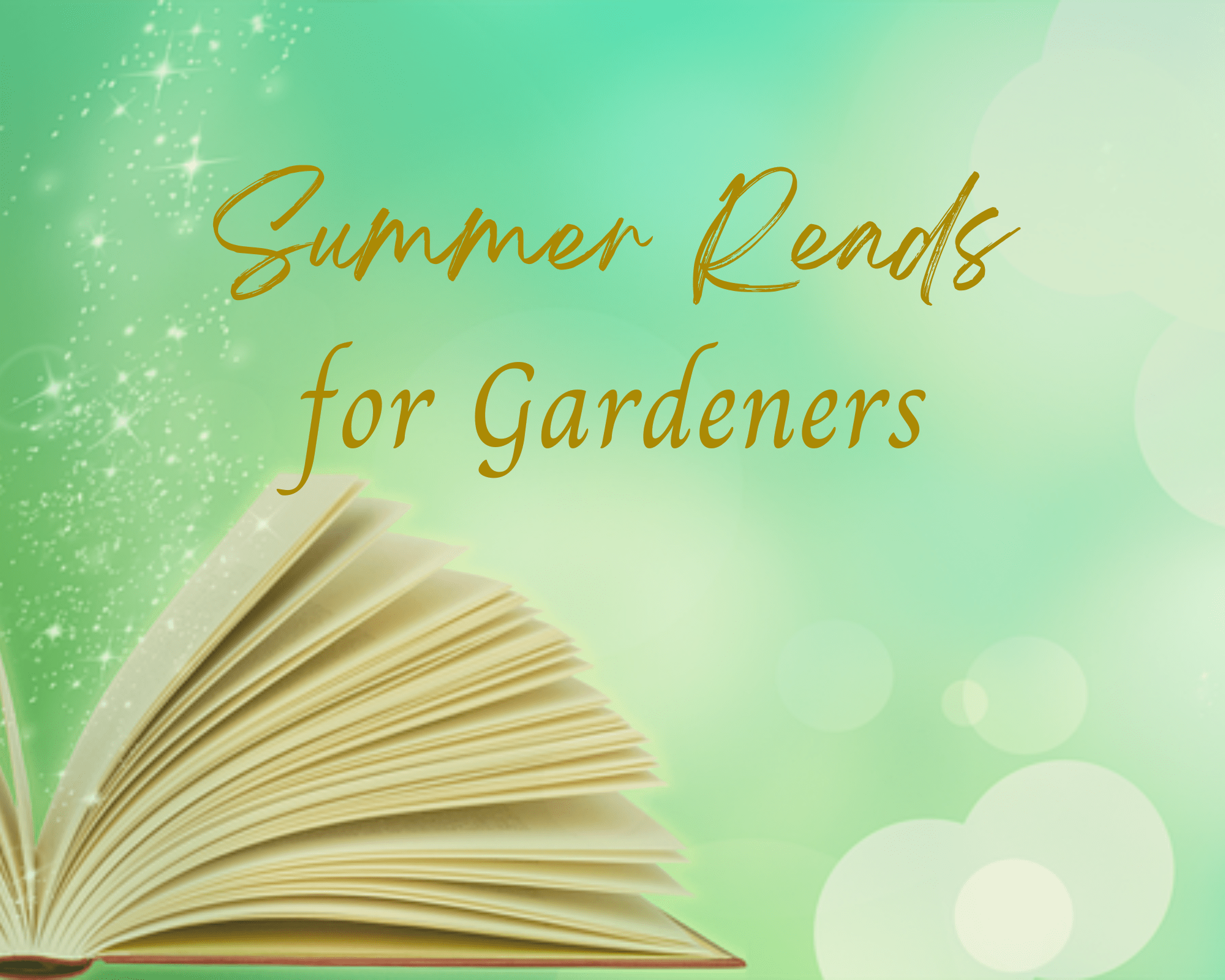This post may contain affiliate links. As an Amazon Associate we earn from qualifying purchases.
Creating flower bed borders isn’t as challenging as it may seem. Creating a plan first is key.
Ah, to have a clean slate on which to impose my gardening dreams!
Creating a landscape from scratch is a huge job, but for the avid gardener, it’s a dream come true. As you put your landscape design to paper, think about your flower bed borders and what, exactly, they’ll be bordering — what lies behind them.
As you can see, it takes a plan, and our friends at Virginia Tech offer some help.
The first step in planning the all-season, mixed perennial border is to select key plants. These are chosen for several purposes:
- line
- mass
- color
- dependability
Line is the silhouette of a plant, mass is its shape or denseness, and dependability refers to its ability to remain attractive with a minimum of problems.
The most attractive flower borders are those which are located in front of a suitable background such as a fence, shrubbery, or a building. In some cases, tall flowers such as hollyhocks or sunflower may serve a dual purpose as flowers in the border and as background plants. Annual or perennial flowers of medium height may serve as background plants for a short border planting.
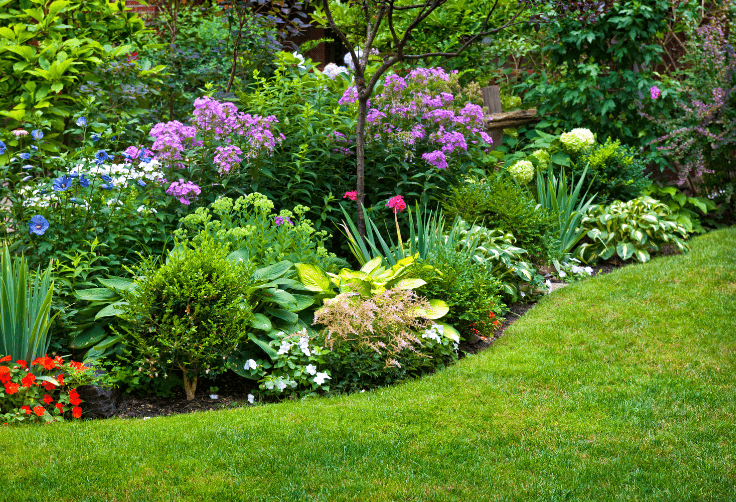 A general rule is to avoid a ruler-straight front edge, unless the garden is formal. A gentle to boldly sweeping curve, easily laid out with a garden hose, is best even along a fence. The deeper the curve, the slower the eye moves and the greater will be the visual enjoyment. A border outlined with bricks or flat stones set flush with the soil is better than a steeply cut lawn edge which must be trimmed after mowing.
A general rule is to avoid a ruler-straight front edge, unless the garden is formal. A gentle to boldly sweeping curve, easily laid out with a garden hose, is best even along a fence. The deeper the curve, the slower the eye moves and the greater will be the visual enjoyment. A border outlined with bricks or flat stones set flush with the soil is better than a steeply cut lawn edge which must be trimmed after mowing.
Establish plants in groups large enough to form masses of color or texture. As a rule, five to seven plants will create the desired effect. A large delphinium or peony will be of sufficient size to be attractive, but a random collection of different small- to medium-sized plants will present a disorganized, checkerboard appearance.
Each group of flowers should have an irregular shape. These masses of color and texture should blend into a pleasing pattern of color harmony. Dwarf flowers may be used as a continuous edging or border along the front of the bed.
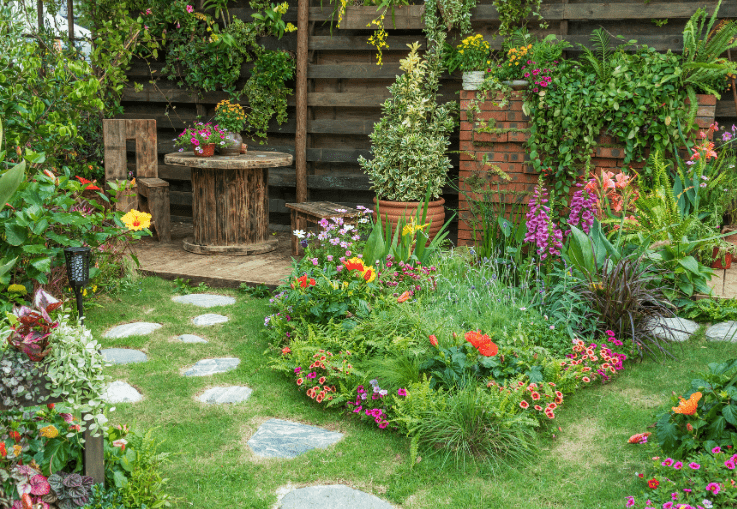 Flower borders may be of any width, depending on the space available. In a small yard the bed may be only 2 or 3 feet wide. In a spacious location, the border planting may have a width of 6 or 8 feet. If the border is quite deep, a pathway of stepping stones may be helpful as a means of working among the flowers without compacting the soil.
Flower borders may be of any width, depending on the space available. In a small yard the bed may be only 2 or 3 feet wide. In a spacious location, the border planting may have a width of 6 or 8 feet. If the border is quite deep, a pathway of stepping stones may be helpful as a means of working among the flowers without compacting the soil.
Tall flowers should be selected for the back part of the bed, with medium-height species in the middle, and dwarf varieties along the front as edging plants. This is very easily done because the height of all varieties is stated in seed catalogs. Plants along the front edge of the flower bed should be located far enough back to allow easy mowing of the lawn.
Plant height in the flower bed borders is best limited to 2/3 the width of the border, e.g., no plants taller than 4 feet in a border 6 feet wide. Height lines should be broken up by letting some tall plants extend into the medium height groups, with a few recessed clumps or drifts leading the eye back into the border.
This gives a more natural effect than a step profile. Try to vary heights, but in general, keep taller plants in the back and shorter ones toward the front.
The distance between plants in flower bed borders depends on the form of the individual plants and the effect which is desired in the landscape. Allow adequate space between plants. Many gardeners crowd their plants too much.
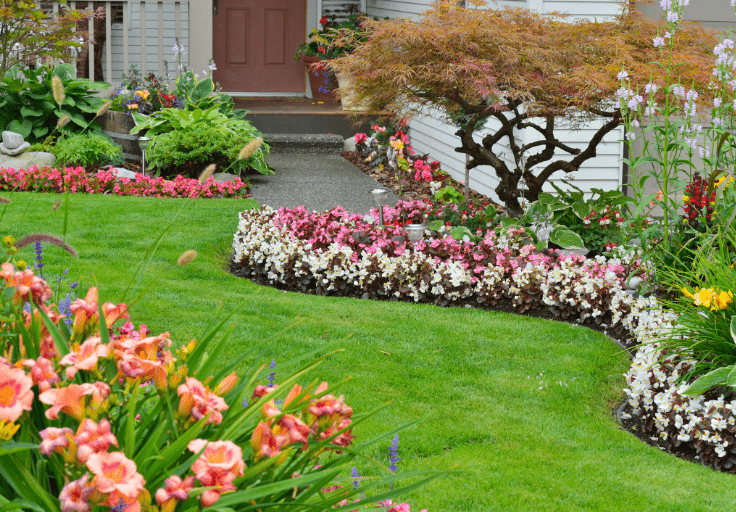 As a rule, the tall, spired-type flowers such as hollyhock, gladiolus, and rocket snapdragons which are trained to a very few stems, should be spaced about 1/4 as far apart as their mature height.
As a rule, the tall, spired-type flowers such as hollyhock, gladiolus, and rocket snapdragons which are trained to a very few stems, should be spaced about 1/4 as far apart as their mature height.
Tall bushy plants may be spaced about 1/2 as far apart as their mature height. Rounded, bushy annuals and perennials should be spaced about as far apart as their mature height. Creeping, groundcover-type plants may be spaced about twice as far apart as their mature height.
In all cases, if a solid mass of plants is desired, the spacing may be reduced. If individual plants are to be conspicuous as specimens and allowed to produce large flowers, the distances should be increased.
The enormous color range in perennials, plus their easy relocation if disharmony occurs, gives the gardener great latitude in choosing and combining colors. A border in tones of the same color can be effective, several closely related colors may be used, or the border may be made wildly exuberant with a vast variety of hues in one or more seasons.
Hues are modifications of color such as orange-red. The objective is a balanced composition in every season, with no section being at any time too heavily weighted with one color, and the bloom distributed so that it always makes a pleasing pattern through the bed.
 Many gardening books give excellent lists of compatible colors; these plus a garden notebook and camera are invaluable for planning and revising color schemes. For real floral artistry, it is perhaps more important to consider intensity, which is the vividness of a color, rather than hue.
Many gardening books give excellent lists of compatible colors; these plus a garden notebook and camera are invaluable for planning and revising color schemes. For real floral artistry, it is perhaps more important to consider intensity, which is the vividness of a color, rather than hue.
For example, light tones placed near dark ones, or contrasting palest tones with the most intense, can give new interest and life to the border. Also, consider location and color. White is especially good near patios because it shows up well in the evening or dusk hours when patios are often in use.
Some colors are suitable only as dramatic accents: deep, pure red clashes with almost anything (unless softened by dark green foliage), yet properly used it evokes strength and depth. White flowers and gray foliage are indispensable as separators of conflicting colors. Red, orange, and yellow are warm colors. Blue, green, and violet are cool colors.
The use of warm colors in the flower border of a small yard will give the illusion of little space. Conversely, the use of cool colors gives the impression of openness and space. In general, the smaller the area, the fewer warm colors should be used.
As gardeners become adept at producing constant color harmony in their flower bed borders, they become more aware of the roles played by plant forms and foliage. Good foliage is obviously vital in plants with short blooming periods. Consider how much of the plant foliage will be usable and whether it is a positive or negative attribute. Some plants practically disappear when their blooming season is over (i.e., oriental poppy and bleeding heart), but others stay presentable even when not in flower.
Plants with distinctive forms, color, and foliage – airy and delicate, or strong and solid – are wonderfully useful for creating interest. Ornamental grasses, and even handsome-foliaged vegetables like artichoke and asparagus can be used for effect.
The most logical way to choose plants is first by location, second by period of bloom, then by height and width, and finally by color. Location takes into account the amount of sun or shade and water required. This information is easy to find in books on perennials, in catalogs, and even on the Internet.
The only restrictions on any given plant will be environmental: a lack of ability to tolerate winter or summer temperature extremes; special soil, moisture, or light needs; and any limits the gardener must place on time available for maintenance.
Even in a small border, single plants of different varieties should not be used as it gives a jumbled look. Do not set in precise rows but in groups, as they might grow in nature. Allow enough space for each group to grow comfortably. Decide which flowers you like best, and let these be the basis of your planting. Place them in several spots down the length of the border if you like, but don’t overdo any one plant.
The longer the border has flowers in bloom, the more you will enjoy it. Consider the months when each plant will be at its best. Do not confine yourself to material that blooms all at one time; aim for a steady succession of color.
A last bit of advice: don’t be afraid to be bold, even if it results in some mistakes. Flowers are easy to move, change, or take out altogether. There is no need to be conservative or confined. Flowers are fast growers and can be transplanted at almost any time to help create the desired effect.
Courtesy of Diane Relf and Elizabeth Ball of Virginia Cooperative Extension.
Photo courtesy: UGArdener/Flickr.com

